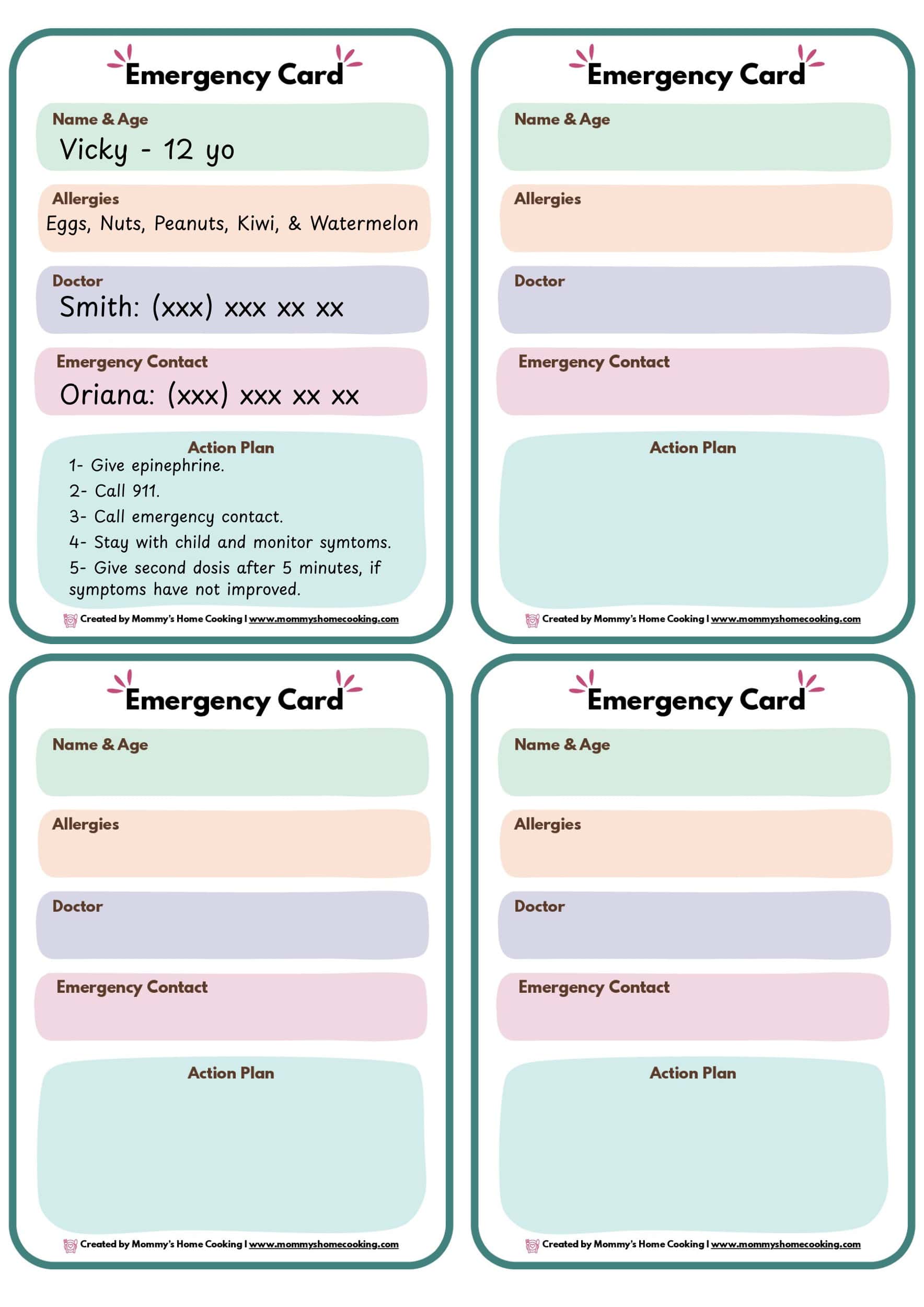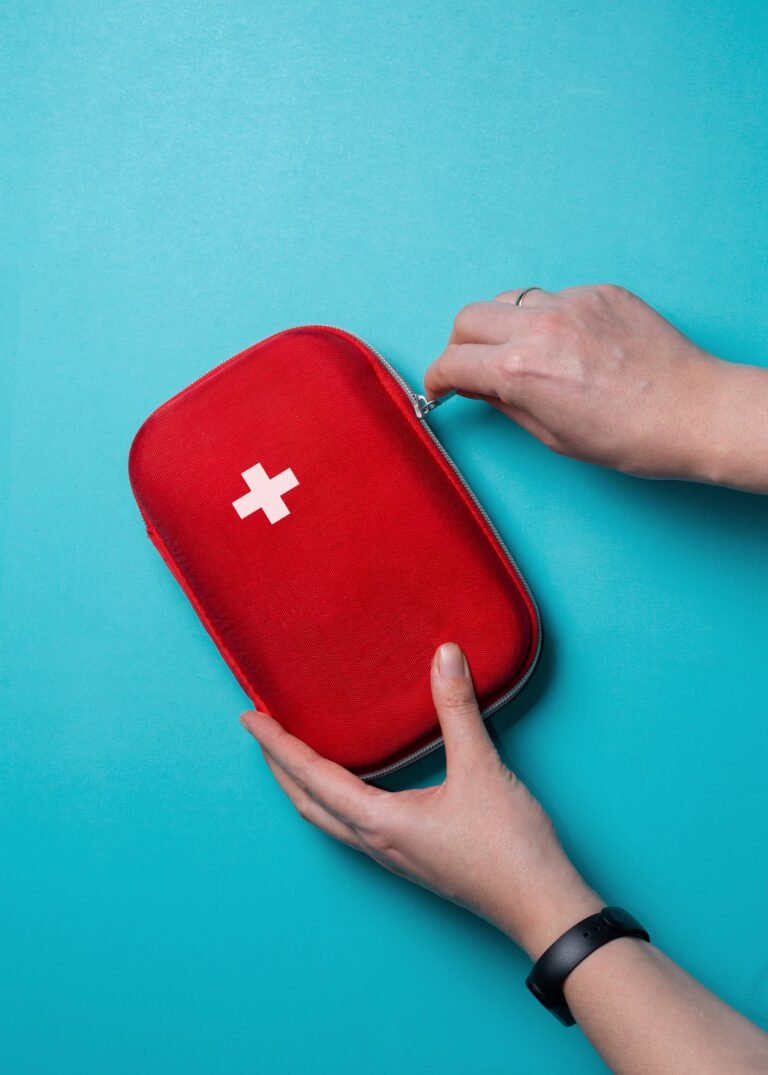Do you feel overwhelmed by food allergies? I was there. After my daughter’s initial reaction, I realized how important it is to prepare, especially when I’m away from home. This post explains everything you need to build a simple and effective emergency kit for food allergies. Whether you’re just starting out or want to reaffirm your setup, this guide is here to help you feel calm, confident and ready for anything.
As a mom and grandma of children with food allergies, I know first hand how stressful it can be to navigate this new reality. When my daughter, Vicki, had her first allergic reaction, I was completely caught off guard. Over the years I have learned that preparation is important. Having an emergency kit can provide peace of mind. Whether you’re new to the world of food allergies or are trying to organize them more, this guide will explain the essentials you need to build a food allergy emergency kit.
What to include in the kit
1. medicine
Your child’s medicine is the most important item in the kit. This is what we pack:
Epinephrine Automatic Injector: Always on two hands. Allergic reactions can escalate quickly, and having a backup is a lifesaver (literally!). Antihistamines: Liquid or potentially chewable options are perfect for children. These can help you manage mild symptoms while seeking medical assistance. Other prescribed medications: Include additional allergy-related medications your child needs, such as inhalers and corticosteroids.
Useful Tips
Set reminders on your phone to check the monthly expiration date. Label everything and grab it easily in a pinch.
2. Medical Information
In an emergency, clearly laying everything out makes all the difference.
Laminating Card: Your child’s name and allergies. Emergency contact information. Step-by-step instructions for using an epinephrine injector. Doctor contact information. Copy of your child’s allergy action plan (if provided).
When Vicki was young, I brought copies of this card everywhere, including my wallet, her backpack, and even her soccer coach. It made communications smoother, reduced pressure on me, and led me to explain everything over and over again.
Do you want it to be easy? We have created a free printable template that you can customize and laminate.


How to use a printable food allergy emergency card
Entering and using the card is quick and easy! What should this do:
Click the link to open the PDF reader or camber template. Customize your card by filling out your child’s name, allergies, emergency contact information, doctor information, and action plan. You can fill out Canva directly on the card, use the PDF editor, or simply print it out and write the details by hand. Recheck everything to ensure that the information is accurate and up-to-date. Download the card as a PDF (we recommend using the “Print PDF” option for the highest quality). Print and laminate to make it clean, durable and easy to wipe off. Make additional copies to store in your wallet, car, emergency kit, child backpack, or any other location you may need.
that’s it! It’s a small step that can make a big difference in emergencies. 💕
3. Cleaning supplies
Accurate exposure is one of the biggest risks, especially when you are away from home. Keeping things clean:
Wet Wipe: Perfect for cleaning your hands, eating surfaces, and cleaning toys. Hand Sanitizer: Choose a gentle allergen-free version.
These two live in every bag I carry. They saved me more time than I could count. From cleaning up restaurant tables to quickly cleaning your hands before snacks.
4. others
These thoughtful extras can make the kit even more convenient:
Small Insulated Pouch: Helps keep your medication at the right temperature, especially on hot or cold days. Notebook or Notebook App: I want to quickly write down something unusual – possible symptoms, food, or exposure status. It is very useful during doctor visits. Comfortable Items: Small toys, fidgets, or books can be a great help in calming your child in stressful moments.
Where to keep it
It helps you prepare multiple emergency kits. Here’s where I keep mine:
At home: In certain places, everyone in the family knows. In your bag: I will not leave the house without it. It goes with us everywhere! At school or nursery: Make sure your staff is trained and know where it is.
Tips for storing hot weather
If you live in a hot climate or are out in the summer, it is very important to properly store your emergency kit.
Use an insulated pouch. Epinephrine autoinjectors in particular can lose their effectiveness when exposed to extreme heat. Do not place kits in parked cars. Even for a short time. Temperatures can surge rapidly and damage the drug. Look for a cooling pack: The insulated pouch comes with a reusable, non-freezing cooling pack specially made for medication transport. Please put it in your bag. If you are out, bring your kit indoors where the temperature is more stable.
This is a case we’ve been using for years! pracmedic bag Epipen carry case – insulated
Travel with your emergency kit
Do you have your emergency kit on the road? Below are some tips to make everything safe, accessible and usable.
If it’s flying, pack it in a carry-on or personal bag. Do not check your medicine in your luggage. Bring extra medication in case of delays or emergency while you are away from home. A labeled bag or pouch allows TSA agents and security staff to see the contents clearly. Keep a copy of your allergy action plan and emergency card in your luggage and hotel room. Store the medicine at the appropriate temperature. In severe heat, use an insulated pouch or a cooling insert.
Pro Tip: I always prepare a small version of our kit just for travel days.
Prepared and confident
Building an emergency kit may seem overwhelming at first, but trust me. You are doing amazing things for your kids. Once your kit is ready, you will feel more confident in working on whatever your method is. Food allergies are difficult, but you are difficult. And remember, you are not alone on this journey. I’ll be here with you and cheer you on every step of the road.
More food allergy resources
❤️Do you like what you like? Subscribe to Mommy’s Home Cooking Mailing List so you won’t miss any recipes! And keep it even more fun on Instagram, Pinterest and Facebook!
(TagStoTRASSLATE) Resources


